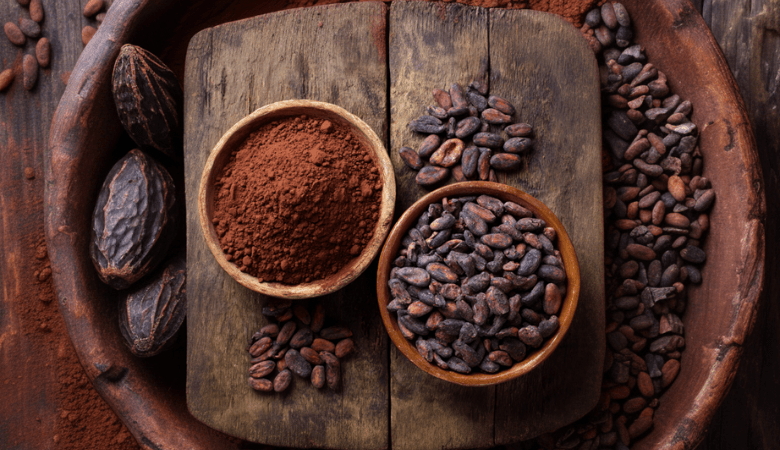
Cocoa vs Cacao: Understanding the Key Differences and Benefits
|
|
Time to read 4 min
This store requires javascript to be enabled for some features to work correctly.
|
|
Time to read 4 min
If you’ve ever stood in the baking aisle wondering about cocoa vs cacao, you’re not alone. The two words are often used interchangeably, but they’re not exactly the same. While both come from the Theobroma cacao tree, how they’re processed makes a big difference in flavor, nutritional profile, and culinary uses.
In this guide, we’ll break down the differences between cocoa and cacao, explore their health benefits, and answer common questions to help you choose the right one for your recipes.
Because cacao undergoes less processing, it retains more antioxidants, polyphenols, and essential fatty acids. This is why it’s often marketed as the “healthier” option.
Cocoa still contains beneficial compounds like flavonoids, but the roasting process lowers the overall ORAC value (a measure of antioxidant capacity).
This difference impacts not just nutrition, but also flavor and how the powders behave in baking.
Cacao generally contains:
Cocoa still offers nutrients, but in slightly lower concentrations due to heat exposure.
Cacao is especially rich in flavonoids and polyphenols, which are compounds studied for their role in supporting cellular health and circulation.
Some studies suggest flavonoids in cacao may help with memory and focus, making it popular among nootropic enthusiasts.
Both cacao and cocoa contain theobromine, a natural stimulant that offers a gentler lift compared to caffeine.
Cacao’s antioxidant profile has been linked in research to supporting blood flow and vascular health.
Both cacao and cocoa contain naturally occurring compounds that can act as mild stimulants, though they differ from coffee or energy drinks.
Found in higher amounts in cacao, theobromine provides a gentle, sustained energy boost without the sharp jitters or crash that caffeine often causes.
It can support alertness, focus, and mood, making cacao a favorite in nootropic and wellness circles.
Cacao does contain some caffeine, but much less than coffee or tea.
Cocoa, because it’s roasted, often has slightly reduced caffeine and theobromine compared to raw cacao.
In short: Both cocoa and cacao can provide a subtle lift in energy and mood, but cacao is typically the more stimulating of the two.
Tip: You can often substitute cacao for cocoa, but expect a more intense flavor and slightly different texture.
Cacao generally has higher nutrient density since it is less processed. Cocoa is still beneficial but contains fewer antioxidants.
No. 100% cocoa powder is roasted, while 100% cacao powder is raw. Both are unsweetened but differ in taste and nutrient content.
They come from the same bean, but cacao is raw and cocoa is roasted.
Yes, but the flavor will be stronger and slightly more bitter. You may need to adjust sweeteners to balance.
Not exactly. Unsweetened cocoa powder is roasted, while cacao powder is raw. Both contain no added sugar.
Yes, but expect a more robust, bitter flavor. Many bakers mix cacao with cocoa for balance.
Yes, cacao contains a small amount of caffeine, but it’s generally lower than coffee. Its stimulating effect mostly comes from theobromine.
Cocoa powder is usually preferred because it dissolves better and has a smoother taste. Cacao can be used but may result in a more bitter drink.